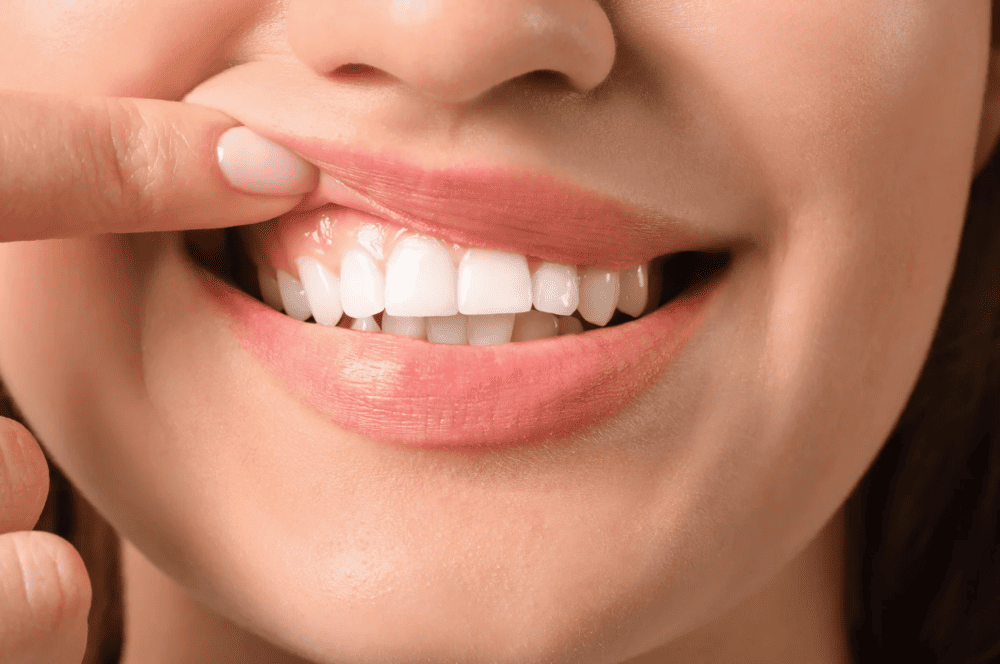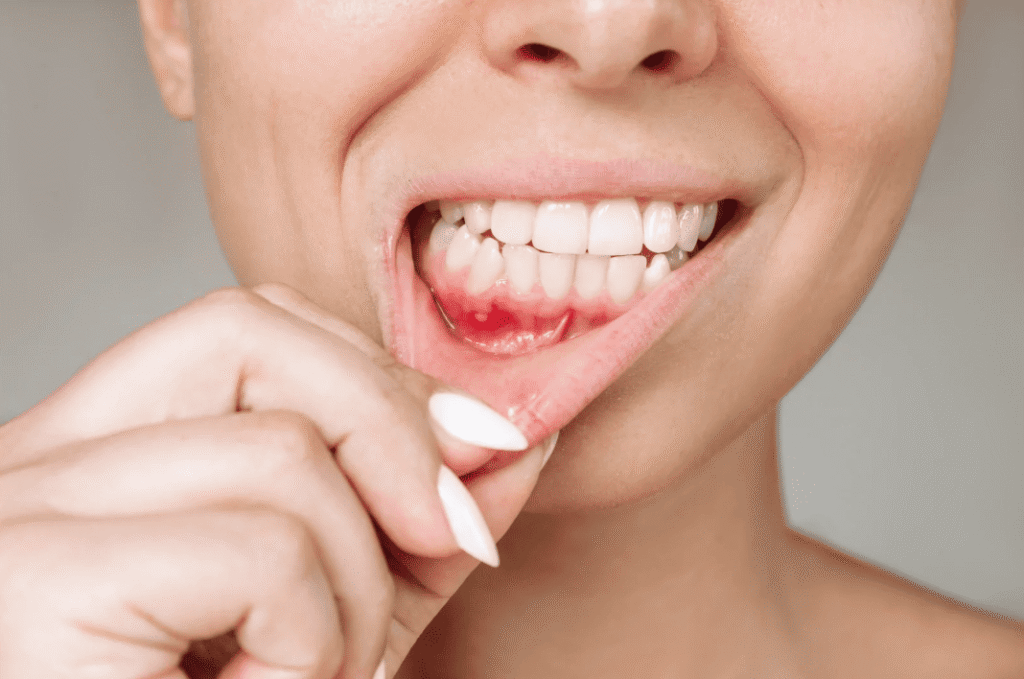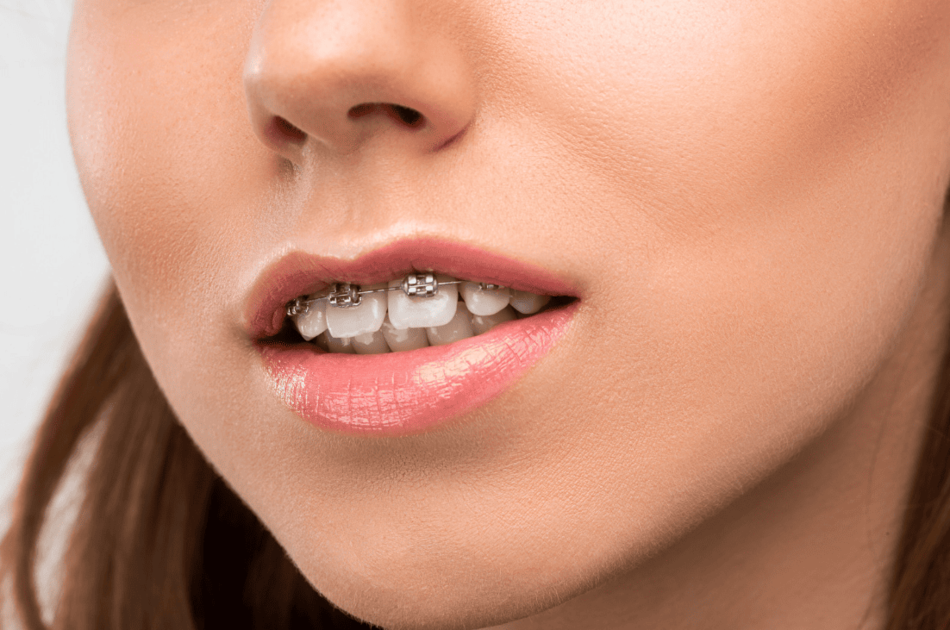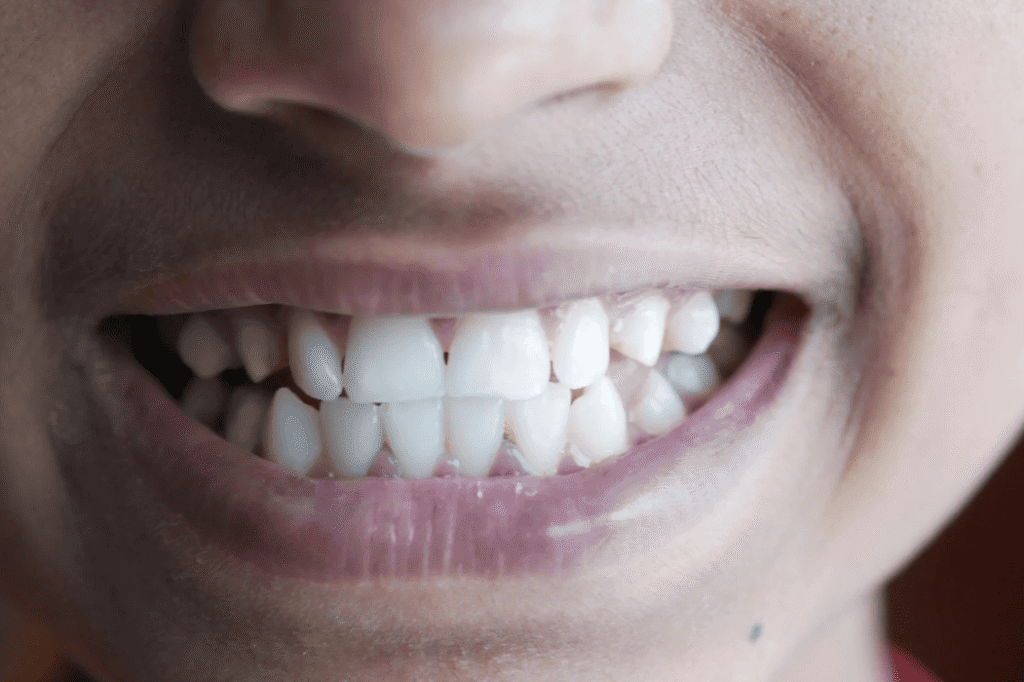
Dental Veneers: Benefits, Costs, Procedure, and Potential Risks
Dental veneers — also known as porcelain veneers — have become one of the most sought-after cosmetic dental treatments in modern dentistry. Whether you wish to achieve a white smile, enhance the shape of your teeth, or correct minor imperfections, veneers can transform your smile quickly and naturally.
However, before deciding on treatment, it’s essential to understand the different types of veneers, their pros and cons, the treatment process, price, and potential risks. This guide will help you determine whether veneers are the right cosmetic solution for you.
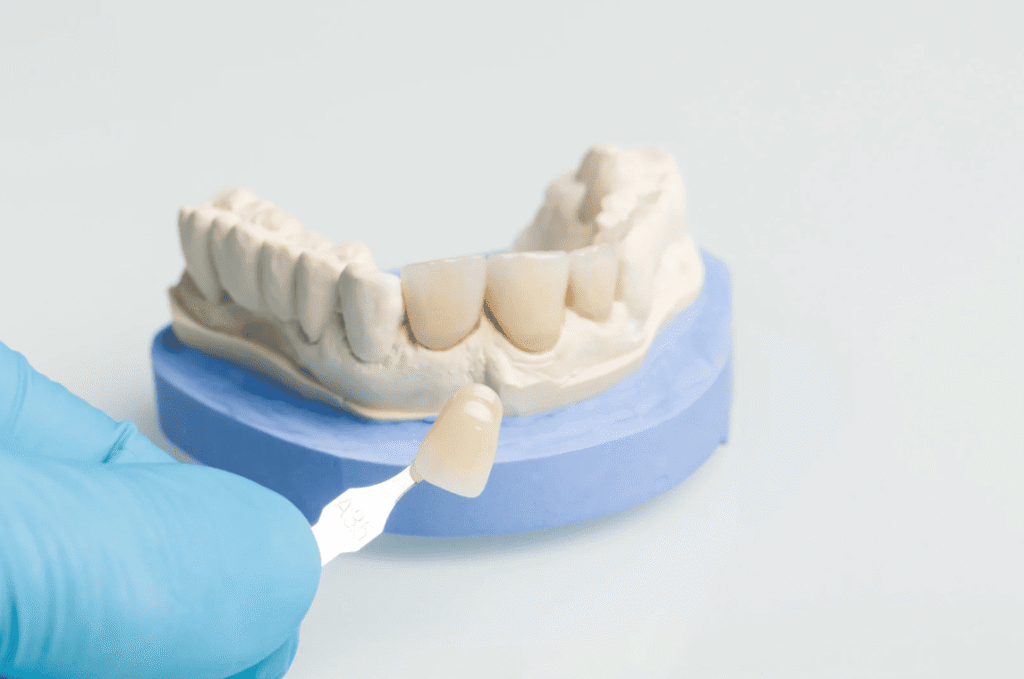
What Are Dental Veneers?
Dental veneers are ultra-thin restorations designed to bond to the front surface of your teeth to improve their appearance.
They are custom-made to match your natural teeth in shape, colour, and proportion, providing a flawless and lasting result.
Common veneer materials include:
- High-strength porcelain veneers: Known for their natural translucency, stain resistance, and durability.
- Composite resin veneers: A more affordable, quicker option, though less durable and less glossy than porcelain.
These are usually “no prep” veneers, meaning that very little or no tooth preparation is needed. These are also easy to repair in case of chipping or breakage.
These thin shells are individually crafted by dental technicians according to your smile design and bonded by your dentist to the front teeth, achieving a uniform and naturally radiant appearance.
Main Purposes of Veneers
Dental veneers do much more than brighten your teeth — they can correct a wide range of cosmetic issues, including:
- Discoloured or darkened teeth (e.g. tetracycline stains, non-vital teeth)
- Chipped, worn, or misshapen teeth
- Minor tooth misalignment or gaps (such as diastema between front teeth)
- Improving smile symmetry and proportions, making your teeth appear more even and harmonious
The biggest advantage of veneers is their ability to instantly enhance the aesthetics of your smile with a minimally invasive approach, preserving more natural tooth structure compared to traditional crowns or orthodontic treatments.
Book Your Smile Design Consultation
A confident smile starts with the right care. Whether you wish to enhance your tooth colour, refine the shape, or achieve a more radiant look, our expert dental team can design a customised porcelain veneer treatment that complements your natural beauty.
Book your consultation today and take the first step towards your dream smile.
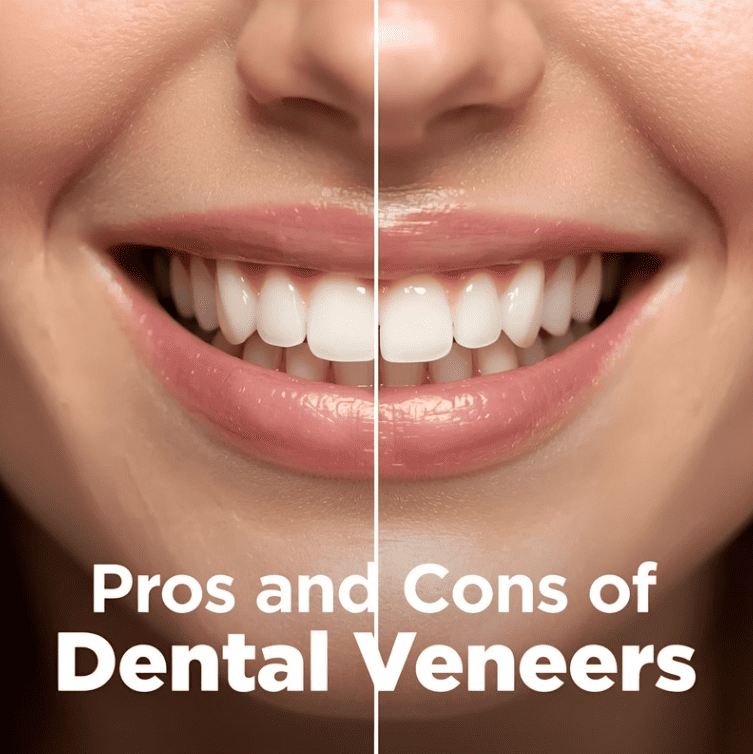
Pros and Cons of Dental Veneers: Is This Treatment Right for You?
Dental veneers — particularly porcelain veneers — are among the most sought-after smile enhancement treatments in modern cosmetic dentistry. They can dramatically improve the appearance of your teeth in a short time. However, understanding their advantages and potential limitations before proceeding is crucial to ensure both aesthetic success and long-term oral health.
🌟 Key Benefits of Dental Veneers
1. Instantly Transform Your Smile
Porcelain veneers can effectively correct discolouration, gaps, uneven shapes, or minor misalignment. After treatment, the results are immediately noticeable — creating a balanced, natural, and radiant smile that achieves a complete “smile makeover.”
2. Natural Appearance and Excellent Stain Resistance
High-quality porcelain materials (such as E.max or Zirconia) offer remarkable translucency and lustre, mimicking the optical properties of natural enamel. Their smooth, dense surface makes them resistant to staining from coffee, tea, red wine, or tobacco — keeping your smile bright for years.
3. Minimally Invasive with Maximum Preservation
Unlike full crowns that require substantial tooth reduction, veneers need only minimal enamel removal (usually <0.5 mm). Some “no-prep veneers” may even require no tooth reduction at all, making veneers a conservative and aesthetic option.
4. Correct Multiple Aesthetic Issues at Once
Veneers not only enhance tooth colour but also refine shape, size, symmetry, and smile alignment. This makes them a preferred choice for comprehensive smile design, often chosen by celebrities and professionals who seek a flawless appearance.
⚠️ Potential Drawbacks and Risks of Veneers
1. Irreversible Enamel Reduction
To ensure a seamless and natural fit, some enamel may need to be lightly removed. Though minimal, this process is not reversible, meaning the tooth will always require coverage afterward.
2. Higher Cost
Porcelain veneers are a premium cosmetic treatment, involving advanced smile design software, high-quality bonding agents, and expert laboratory craftsmanship. While the cost is higher than teeth whitening or composite restorations, the durability, aesthetic quality, and stability justify the investment.
3. Possible Temporary Sensitivity or Fracture Risk
After minimal enamel reduction, teeth may feel slightly sensitive to hot or cold, usually resolving within a few weeks. Patients who grind their teeth, bite hard foods, or have misaligned bites may face a higher risk of veneer damage and should follow their dentist’s advice for protection.
4. Edge Discolouration or Loosening Over Time
If plaque accumulates along the veneer margins or oral hygiene is neglected, minor discolouration or edge lifting may occur. Additionally, low-quality materials or poor laboratory work can compromise long-term stability.
5. Requires Ongoing Maintenance and Dental Check-Ups
Veneers are not a one-time permanent fix. Without regular cleaning or proper gum care, patients may still develop periodontal issues. Maintaining good oral hygiene habits and attending routine dental visits are essential to preserve veneer aesthetics and longevity.
*Dental veneers can be a life-changing treatment when designed and placed by an experienced dentist.
While they offer instant cosmetic transformation, they also require commitment to maintenance and care.
Before proceeding, discuss your expectations, lifestyle, and budget with a trusted dental professional to determine whether veneers are the right solution for your smile.
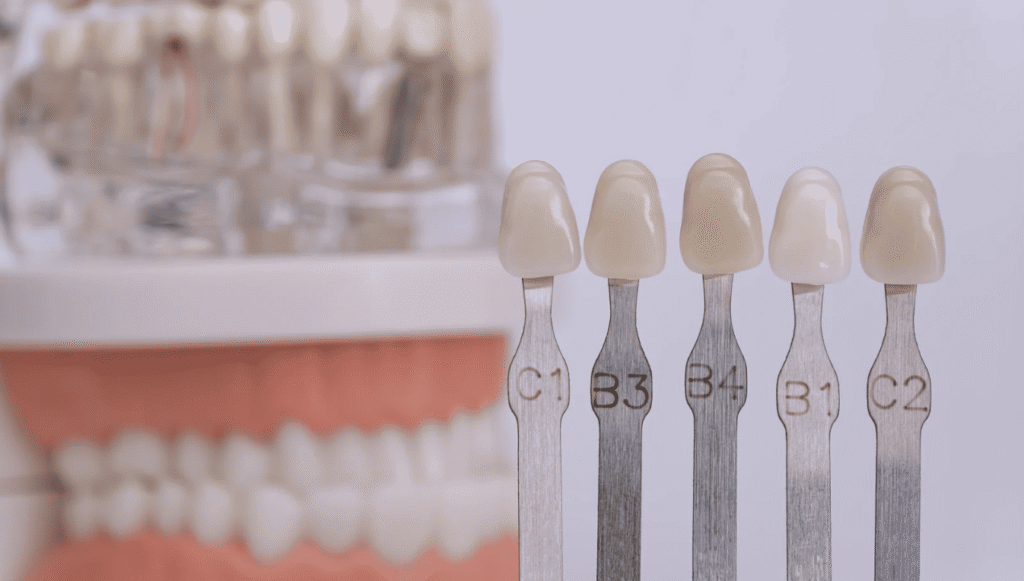
Types and Materials of Dental Veneers — Which One Is Right for You?
Choosing the right type of dental veneer depends on several factors — including aesthetic goals, durability, budget, and your individual oral condition. The three most common types of veneers are Porcelain/Ceramic Veneers, Composite Resin Veneers and Ultra-Thin/No-Prep Veneers.
Below is a detailed comparison of each type — their materials, characteristics, advantages, disadvantages, and ideal candidates — to help you decide which option best fits your needs.
1. Porcelain / Ceramic Veneers
Porcelain or ceramic veneers are the most popular and high-end type of veneer. They are made from strong, glass-like ceramic materials that replicate the natural translucency and lustre of real enamel, offering the most realistic smile transformation.
Advantages
- Exceptionally natural appearance: Porcelain reflects light similarly to natural enamel, providing the most lifelike results.
- Highly stain-resistant: Resistant to discolouration from coffee, tea, red wine, and tobacco.
- Long-lasting durability: Can last 10–15 years or more with proper care.
- Stable and colour-fast: Maintains its brightness and shape for many years.
Disadvantages
- Higher cost: Generally more expensive than other veneer materials.
- Requires minor enamel reduction: A small amount of tooth enamel may need to be removed for a secure bond.
- Difficult to repair: If damaged, the entire veneer usually needs replacement rather than patch repair.
Best suited for
Patients seeking a premium, natural-looking, and long-term smile enhancement solution.
2. Composite / Resin Veneers
Made from tooth-coloured composite resin, these veneers can be sculpted directly onto the teeth in the clinic or bonded as pre-fabricated shells.
Advantages
- More affordable: Typically less expensive than porcelain veneers.
- Quick procedure: Some cases can be completed in a single visit.
- Easy to repair: Damaged or worn areas can be retouched without replacing the entire veneer.
Disadvantages
- Prone to staining: Over time, exposure to coffee, tea, or smoking may cause discolouration.
- Less durable: More susceptible to wear and chipping compared to porcelain.
- Shorter lifespan: Typically lasts 3–5 years before requiring replacement.
Best suited for
Those looking for a budget-friendly or short-term cosmetic solution to enhance their smile quickly.
3. Ultra-Thin / No-Prep Veneers
As the name suggests, these veneers are extremely thin (around 0.2–0.3 mm) and can be bonded directly onto the tooth surface. In some cases, no enamel reduction is required — hence the name “no-prep veneers”.
Advantages
- Minimally invasive: Preserves maximum natural tooth structure with little to no enamel removal.
- Comfortable and fast recovery: The process is simple and gentle on the teeth.
- Natural results: Ideal for patients with lighter tooth shades and good alignment.
Disadvantages
- Limited applicability: May not be suitable for heavily discoloured or misaligned teeth.
- Slightly less stable: Because of their thinness, they may not be ideal for heavy biters or those who grind their teeth.
- Lower opacity: Less effective at masking dark or root canal–treated teeth.
Best suited for
Patients with naturally well-aligned teeth who want a subtle enhancement while preserving their natural enamel.
Comparison Overview: Types of Veneers
Veneer Type | Material | Tooth Preparation | Natural Appearance | Stain Resistance | Durability | Average Lifespan |
Porcelain Veneers | All-ceramic / lithium disilicate | Minimal enamel reduction | ⭐⭐⭐⭐⭐ | ⭐⭐⭐⭐⭐ | ⭐⭐⭐⭐⭐ | 10–15 years |
Composite Veneers | Composite resin | Little to none | ⭐⭐⭐ | ⭐⭐ | ⭐⭐ | 3–5 years |
Ultra-Thin Veneers | Ultra-thin porcelain | None or minimal | ⭐⭐⭐⭐ | ⭐⭐⭐⭐ | ⭐⭐⭐ | 7–10 years |
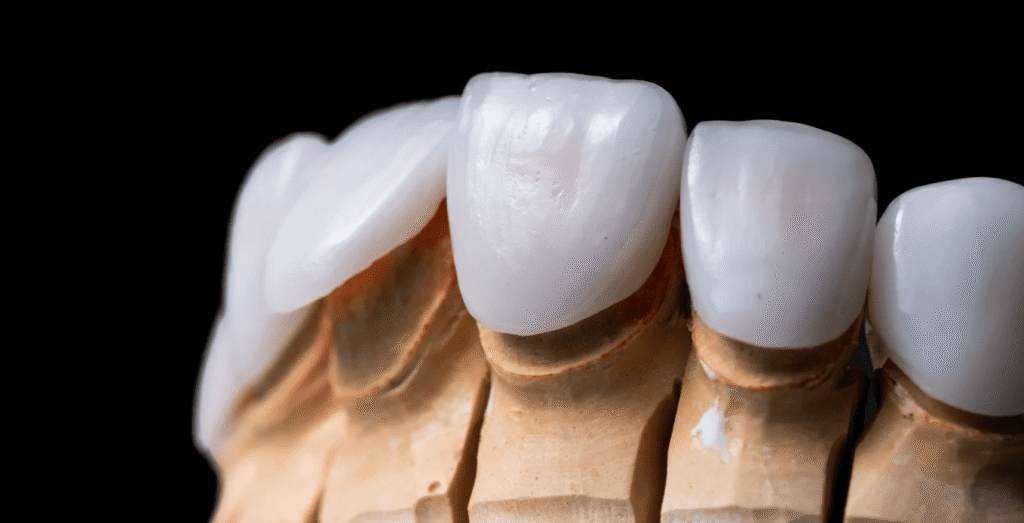
Who Is Suitable for Porcelain Veneers?
Porcelain veneers are a highly personalised cosmetic dental treatment designed to enhance your smile’s appearance. However, they are not suitable for everyone. Before starting treatment, your dentist will perform a thorough oral examination to assess your teeth, gums, and bite alignment — ensuring the veneers can be safely and effectively bonded for long-lasting, aesthetic results.
Below are the situations where veneers may be suitable, and cases where they are not recommended.
✅ When Veneers May Be Suitable
If you have any of the following conditions, porcelain or composite veneers can significantly improve your smile’s appearance:
Tooth discolouration or staining (resistant to whitening)
Some teeth are deeply discoloured due to tetracycline staining, root canal treatment, or natural discolouration. In such cases, professional whitening may not produce sufficient results. Veneers can effectively mask internal stains and restore a bright, natural shine.
Minor chips, cracks, or worn enamel
For teeth with small chips or worn edges, veneers can restore their shape and surface smoothness without extensive tooth reduction.
Gaps between teeth (diastema closure)
Veneers can cosmetically close small gaps between front teeth, improving alignment and creating a more balanced and harmonious smile.
Mild misalignment or irregularly shaped teeth
If your front teeth are slightly misaligned or uneven in shape or length, veneers can provide a straighter, more symmetrical appearance — offering an instant aesthetic improvement similar to orthodontic treatment. This makes veneers a popular choice among busy professionals and celebrities seeking a fast smile makeover.
Smile design enhancement
If you wish to improve your smile line, tooth symmetry, or achieve a whiter, more proportionate smile, your dentist can design a customised veneer plan based on your facial structure and smile aesthetics to deliver a naturally beautiful result.
❌ When Veneers Are Not Recommended
If you have any of the following oral conditions, veneers may not be suitable initially. The underlying dental issues should be treated first before considering a cosmetic veneer procedure.
Active tooth decay or pulp infection
If your tooth has extensive decay or pain, it must first be restored with fillings or root canal (endodontic) treatment to ensure stability before veneer placement.
Gum inflammation or periodontal disease
Veneers bonded on unhealthy gums may loosen or develop marginal staining. It is important to undergo professional cleaning and periodontal therapy first, then consider veneers once the gums are healthy.
Severe misalignment or bite problems
If your teeth are significantly crooked or have bite discrepancies, orthodontic treatment such as Invisalign may be recommended before veneers to achieve optimal alignment and long-term stability.
Severe bruxism (teeth grinding) or deep bite
Chronic grinding can cause veneer fractures or debonding. If you grind your teeth, your dentist may advise addressing the bruxism first or wearing a night guard to protect your veneers.
🩺 Professional Advice: Comprehensive Check-Up Before Veneer Treatment
At Smith & Jain Dentists, we believe true smile transformation begins with a healthy foundation.
Before any veneer procedure, our dentists conduct a full-mouth assessment to ensure your oral condition is suitable for long-term success, including:
- Comprehensive gum and periodontal evaluation
- X-ray examination to assess root and bone health
- Intraoral and smile photography for smile design analysis
Only when your teeth and gums are in optimal condition will we proceed with veneer bonding — ensuring results that are not only aesthetically pleasing but also durable and functionally stable.
Book Your Smile Design Consultation
A confident smile starts with the right care. Whether you wish to enhance your tooth colour, refine the shape, or achieve a more radiant look, our expert dental team can design a customised porcelain veneer treatment that complements your natural beauty.
Book your consultation today and take the first step towards your dream smile.
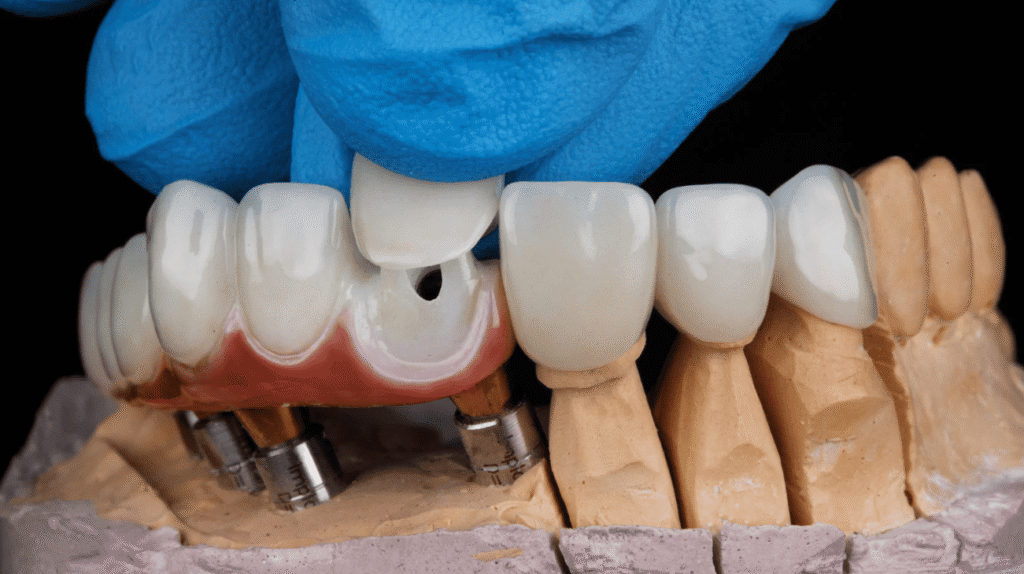
Veneer Treatment Process (Step-by-Step Guide)
Porcelain veneers are a highly precise and aesthetic dental treatment. From the first consultation to final bonding, the process involves multiple stages to ensure your veneers look natural, fit perfectly, and blend seamlessly with your overall smile.
Below is a detailed breakdown of the typical procedure (steps and appointments may vary depending on your individual dental condition and your dentist’s approach).
Step 1: Initial Consultation and Assessment
Before beginning any cosmetic treatment, your dentist will perform a comprehensive oral examination to ensure your mouth is healthy and suitable for veneers.
This includes:
- A thorough clinical check of your teeth and gums, along with X-rays or intraoral photos if needed to rule out decay, gum disease, or root issues.
- A detailed discussion about your smile goals — such as desired tooth shade, shape, or size.
- Explanation of different veneer materials (e.g., porcelain, ultra-thin veneers), their longevity, and cost.
- Treatment sequencing if other procedures are required first (e.g., root canal treatment, gum therapy, or Invisalign).
This step forms the foundation of a successful veneer treatment, ensuring results that are both beautiful and long-lasting.
Step 2: Digital Smile Design (DSD) and Preview Mock-Up
After the initial consultation, your dentist will use Digital Smile Design (DSD) technology to plan your ideal smile. Based on your facial structure, tooth proportions, and smile line, a digital simulation or physical mock-up is created to help visualise the final result before starting.
- You’ll be able to preview how your new smile will look.
- The shape, length, and colour of each veneer can be adjusted at this stage to achieve the most natural, harmonious appearance.
This step significantly reduces the risk of dissatisfaction after completion and ensures your veneers complement your face and personality perfectly.
Step 3: Minimal Tooth Preparation (If Required)
To allow veneers to bond securely and align naturally with surrounding teeth, your dentist may gently reshape the outer enamel surface.
- The reduction is minimal — usually 0.3–0.5 mm, only within the enamel layer.
- For no-prep or ultra-thin veneers, tooth reduction may be unnecessary or extremely minimal.
- Temporary veneers may be placed to protect your teeth and maintain aesthetics while the permanent veneers are being crafted.
This step requires precision and experience to achieve an ideal fit while preserving maximum natural tooth structure.
Step 4: Impression or Digital Scan → Veneer Fabrication
Your dentist will then record your tooth details using one of the following:
- A high-precision impression or
- A digital intraoral scan (for a fully 3D model).
These records are sent to a professional dental laboratory, where the dental technician crafts each veneer by layering and firing porcelain, customising the colour, translucency, and surface texture for a lifelike result.
Fabrication typically takes a few days to two weeks, depending on the number of veneers and complexity of design.
Step 5: Try-In, Adjustments, and Final Bonding
Once your veneers are ready, your dentist will:
- Try them in to check the colour match, contour, and gumline adaptation.
- Ensure your bite feels comfortable and natural.
- Make fine adjustments if needed before final placement.
When everything is perfect, the veneers are permanently bonded to your teeth using professional adhesive and light-curing technology.
Finally, your dentist will polish and refine the surfaces — revealing a smooth, radiant, and natural-looking smile.
Step 6: Post-Treatment Care and Maintenance
Proper care greatly extends the lifespan of your veneers — typically 10 years or more with good maintenance.
Your dentist will recommend:
- Routine check-ups and professional cleaning every six months to maintain gum health and veneer shine.
- Avoid biting on hard objects (e.g., ice, bones, bottle caps).
- If you grind your teeth at night, wear a night guard to prevent veneer damage or detachment.
- Visit your dentist promptly if you notice rough edges, looseness, or discolouration at the margins.
*Veneer treatment combines artistry and dental science — every step plays a vital role in achieving the perfect smile. Choosing an experienced dental team and a reputable clinic like Smith & Jain Dentists ensures your veneers are beautiful, natural, and long-lasting, helping you smile with confidence for years to come.

Veneer Treatment Cost: Price Range and Key Factors
Veneers are one of the most highly customised cosmetic dental treatments, and the total cost can vary significantly depending on multiple professional and technical factors. In Hong Kong, veneer prices differ based on material selection, dentist’s experience, design complexity, and laboratory craftsmanship. Below is a comprehensive overview to help patients understand what affects veneer pricing and what to consider before starting treatment.
🦷 Cost Differences Between Veneer Materials
Veneers are made from different materials, each offering unique advantages in aesthetics, durability, and translucency, which directly influence the cost.
Porcelain Veneers
Porcelain veneers are the most common choice in premium aesthetic dentistry, known for their lifelike translucency and excellent colour stability. They are typically made from E.max lithium disilicate, zirconia, or layered porcelain, requiring high-precision craftsmanship for realistic, natural-looking results. Due to their superior quality and artistry, porcelain veneers tend to be the most expensive option.
Composite Veneers
Composite veneers are sculpted directly onto the tooth using resin material.
They are a budget-friendly option, offering visible cosmetic improvement at a lower cost. However, they are less durable and more prone to staining over time compared to porcelain veneers — making them suitable for short-term or lower-cost solutions.
No-Prep / Ultrathin Veneers
No-prep veneers require little to no tooth reduction, preserving more of the natural tooth structure. They are minimally invasive and ideal for patients with healthy, well-aligned teeth. Because they demand high technical precision, their price is usually similar to or slightly higher than traditional porcelain veneers.
💡 Main Factors That Influence Veneer Costs
Even among patients choosing the same veneer material, total treatment costs can differ significantly due to the following factors:
1. Dentist and Dental Technician Expertise
Veneer treatment combines artistry and precision dentistry. An experienced dentist and ceramist with a refined aesthetic sense can better control tooth proportions, shade, and smile design, ensuring natural, harmonious results.
2. Material Quality and Fabrication Techniques
High-end ceramics such as E.max and zirconia come with higher laboratory costs but provide superior translucency, strength, and colour stability. Some master ceramists use layered porcelain techniques to replicate the depth and light reflection of natural enamel.
3. Pre-Treatment Requirements
If other dental procedures are needed before veneer placement — such as root canal treatment, cavity repair, periodontal therapy, or gum contouring — this will affect both the overall cost and treatment duration.
4. Digital Smile Design and Case Complexity
Many modern veneer cases use Digital Smile Design (DSD) or mock-up simulations to achieve optimal precision and aesthetics. While this enhances accuracy and predictability, it also involves more time and advanced equipment, contributing to higher fees.
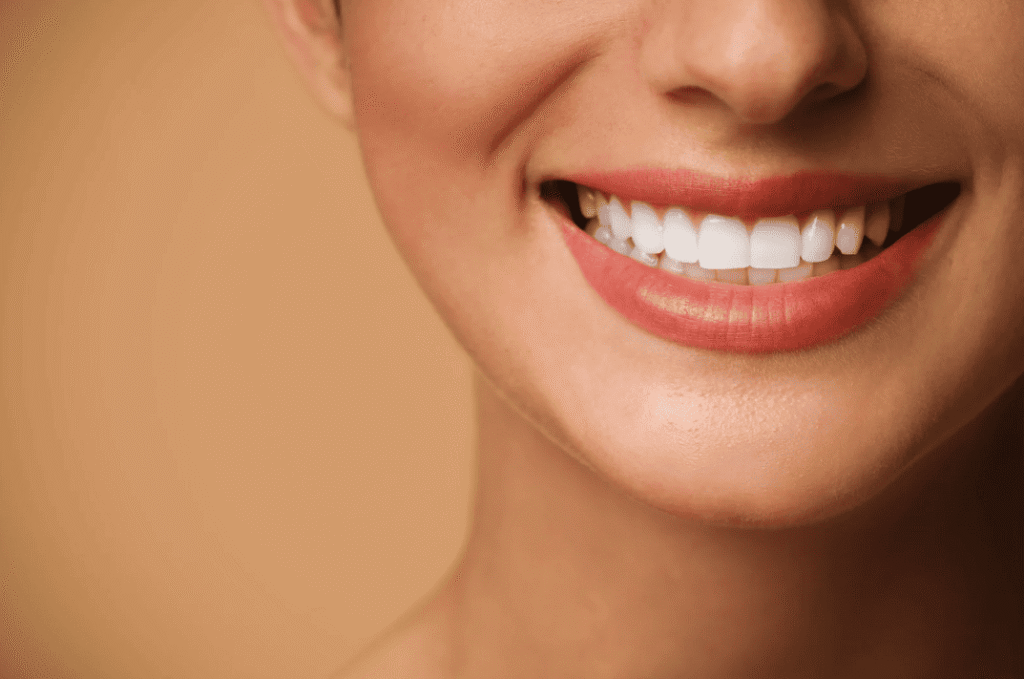
Veneer Aftercare: Maintain a Long-Lasting, Beautiful Smile
Dental veneers can dramatically enhance your smile in a short time, but their longevity and aesthetic quality depend heavily on proper aftercare and daily oral habits. Understanding veneer lifespan and adopting the right maintenance routine ensures your veneers remain natural, durable, and free from unnecessary repairs.
🦷 Veneer Lifespan Overview
Porcelain / Ceramic Veneers
Porcelain veneers are highly durable, typically lasting 10 years or more, and with excellent care, they can last 15–20 years. They resist staining and maintain a natural lustre, helping your smile stay bright and flawless over time.
Composite / Resin Veneers
Composite veneers are a more affordable option, but the material is softer and more prone to wear or discolouration. Their average lifespan is around 3–7 years, after which touch-ups or replacements may be needed to preserve appearance and function.
🪥 Veneer Care Guidelines
1. Brush and Floss Properly Every Day
- Use a soft-bristled toothbrush or an electric toothbrush to prevent surface abrasion.
- Brush twice daily (morning and night), focusing on the gum line and veneer edges.
- Clean between teeth with dental floss or interdental brushes to remove plaque and prevent discolouration or gum inflammation.
2. Schedule Regular Professional Cleanings
- Visit your dentist or dental hygienist every 6 months (or as advised) for professional cleanings.
- Scaling and polishing help maintain gum health and veneer shine while removing tartar buildup.
3. Avoid Biting Hard Objects
- Do not use your teeth to open bottles, crack nuts, or bite ice — this can cause chipping, cracks, or veneer detachment.
4. Protect Against Night Grinding or Clenching
- If you grind or clench your teeth at night, wear a custom-made night guard to reduce stress and friction on the veneers, extending their lifespan.
5. Minimise Staining Foods and Drinks
- Limit coffee, tea, red wine, and tobacco, which may cause surface staining over time.
- Rinse or brush shortly after consuming such items to reduce colour absorption.
6. Visit Your Dentist if You Notice Any Issues
- If you observe staining at the edges, loosening, or increased bite sensitivity, schedule a check-up promptly.
- Your dentist can assess whether a minor repair or replacement is needed to restore comfort and appearance.
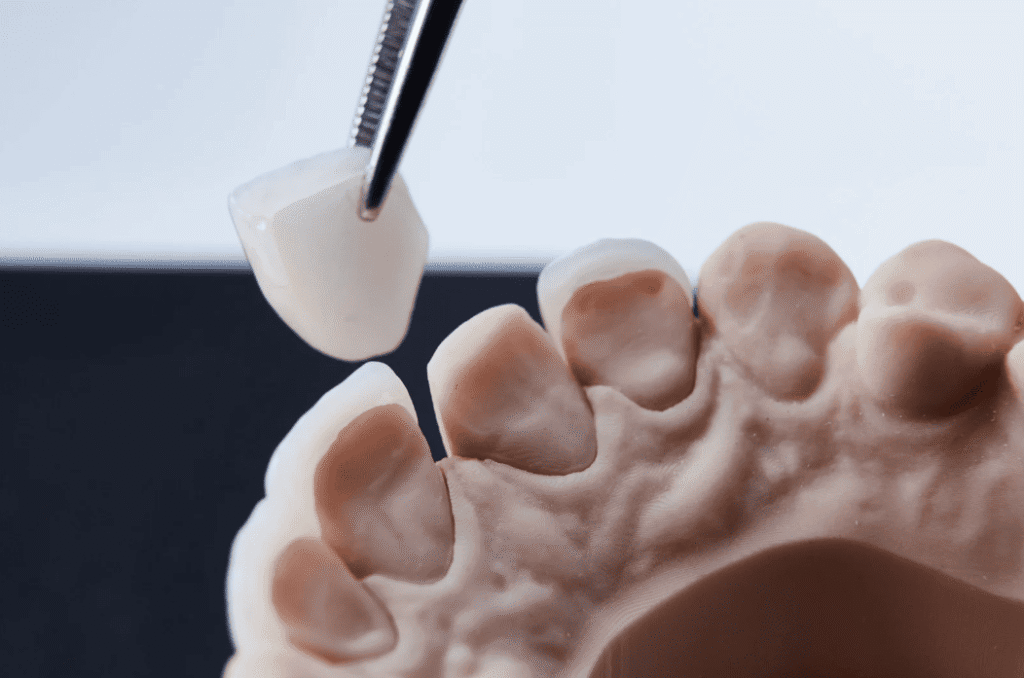
Potential Risks and Side Effects of Dental Veneers
While porcelain veneers are a well-established and highly successful cosmetic dental treatment, every procedure carries certain risks. Understanding these potential issues — and how to prevent them — helps ensure your treatment remains safe, durable, and aesthetically pleasing.
1. Veneer Loosening or Detachment
Veneers may become loose or detached due to external impact, biting hard objects, or uneven bite pressure. If this happens, patients should avoid reattaching the veneer themselves or using glue and should return to the dentist promptly for professional assessment and re-bonding.
2. Gum Recession or Margin Discolouration
If the veneer margin near the gumline is not perfectly fitted, or if oral hygiene is poor, plaque can build up — causing gum inflammation, mild recession, or staining along the edges.
3. Tooth Sensitivity
During veneer preparation, a thin layer of enamel is gently polished to ensure proper bonding. This may cause temporary sensitivity to hot or cold stimuli.
4. Unsatisfactory Colour or Shape
The final aesthetic outcome of porcelain veneers depends heavily on precise communication between the dentist and the dental technician. Inadequate planning may result in teeth that appear too white, unnatural in shape, or out of harmony with facial proportions.
5. Bite Issues and Veneer Wear
If your bite is not properly adjusted after veneer placement, or if you have a habit of teeth grinding (bruxism), veneers may wear down, crack, or affect neighbouring teeth over time.
6. Key Practices to Reduce Risk
To maintain the beauty and stability of your veneers for years to come, it is crucial to combine professional expertise with proper aftercare habits:
- Choose a qualified and experienced dentist who uses high-quality materials such as IPS e.max or other premium ceramics.
- Undergo precise digital smile design and shade analysis before treatment.
- Attend regular follow-up appointments and professional cleanings to monitor veneer margins.
- Maintain good dietary and oral hygiene habits, avoiding highly pigmented drinks or smoking.
Book Your Smile Design Consultation
A confident smile starts with the right care. Whether you wish to enhance your tooth colour, refine the shape, or achieve a more radiant look, our expert dental team can design a customised porcelain veneer treatment that complements your natural beauty.
Book your consultation today and take the first step towards your dream smile.
Frequently Asked Questions About Dental Veneers
Do veneers require tooth shaving?
In most cases, veneers only require minimal enamel reduction (around 0.3–0.5mm), making the procedure very conservative. With today’s ultra-thin or no-prep veneers, some patients may not need any tooth reduction at all. Your dentist will assess your case individually and recommend the best approach for your smile design.
Is the veneer procedure painful?
The treatment is usually performed under local anaesthesia, so patients experience little to no discomfort. After placement, some may feel mild sensitivity to hot or cold, but this typically subsides within a few days to weeks.
Do porcelain veneers stain or discolour over time?
High-quality porcelain veneers (such as E.max or Zirconia) are highly resistant to staining thanks to their smooth and dense surface. However, long-term exposure to coffee, red wine, tea, or tobacco may cause slight edge discolouration over time. Good oral hygiene and regular professional cleaning help maintain their brightness for years.
What should I do if a veneer comes off?
If a veneer becomes loose or detached, do not attempt to reattach it yourself or use any glue. Contact your dentist immediately for a professional assessment — the veneer may be re-bonded or replaced. Choosing a clinic that provides aftercare and warranty ensures long-term peace of mind.
Can I have veneers on all my teeth?
Yes, full-mouth veneers are possible, but most patients only treat the front (smile) zone for aesthetic improvement. Before full-mouth treatment, your dentist will evaluate your bite, gum health, and smile symmetry. In some cases, orthodontic treatment or whitening may be recommended first to achieve the best overall result.
How long do porcelain veneers last?
The lifespan of veneers depends on care and oral habits. Porcelain veneers typically last 10–15 years or longer, and with proper maintenance, they may last over 20 years. Composite veneers, by comparison, usually last 3–7 years and may require periodic repair or replacement.
How should I care for my veneers after treatment?
Proper care greatly extends veneer longevity. We recommend the following:
- Brush twice daily using a soft-bristled toothbrush or electric toothbrush
- Use floss or interdental brushes to clean along the veneer margins
- Avoid biting hard items (ice, nutshells, bottle caps)
- Visit your hygienist every 6 months for professional cleaning
- Wear a night guard if you grind or clench your teeth during sleep
Can veneers correct gaps or crooked teeth?
Yes. Porcelain veneers can close small gaps and improve minor misalignment to create a more balanced smile. However, if the teeth are severely crowded or rotated, orthodontic treatment may be needed before veneer placement for optimal results.
Will veneers affect my gums?
No. When properly designed and fitted, veneers blend seamlessly with the gumline and do not irritate the gums. Maintaining good oral hygiene and having regular professional cleanings will keep the gums healthy and stable.
Can I whiten my teeth after getting veneers?
Porcelain veneers cannot be whitened by bleaching products. If you wish to brighten your natural teeth, it’s best to whiten them before getting veneers so that your dentist can match the veneer shade to your desired tooth colour. This ensures a harmonious and natural smile result.
Disclaimer
All information provided on this website is for informational purposes only and is intended to help readers gain general knowledge about dental health. The content on this website should not be considered a substitute for professional dental diagnosis, advice, or treatment. If you have any dental concerns, please consult a licensed dentist for appropriate medical advice and treatment. Smith & Jain Dentists and its affiliates are not responsible for any direct or indirect damages resulting from the use of this website’s information. This website may include links to external websites for reference purposes only. Smith & Jain Dentists is not responsible for the content or accuracy of third-party websites.

